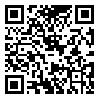Volume 21, Issue 2 (2017)
MJSP 2017, 21(2): 119-145 |
Back to browse issues page
Abstract: (7708 Views)
Remotely sensed data are used to estimate structural parameters in order to reduce the cost and time required for forest inventory. Nowadays, due to the launch of numerous remote sensing systems, a variety of remotely sensed datasets including LiDAR, radar, and optical images are available in different spatial and spectral resolutions. Therefore, it is important to evaluate and compare the performance of these datasets in retrieving structural parameters. Such comparison, however, has rarely been conducted in previous studies. Consequently, this study aims to compare different remotely sensed datasets used for structural parameter estimation. For this purpose, textural information extracted from Worldview-2 (WV-2) and SPOT-5 images and statistical attributes calculated for LiDAR-derived data were individually utilized to model the structural parameters of a Pinus radiata plantation. Comparing the results, while the WV-2 data are suitable to estimate stocking and mean diameter at breast height (DBH), mean height and stand volume were estimated more accurately by LiDAR-derived data. Meanwhile, there was no significant difference among remotely sensed datasets for basal area estimation. Finally, it was shown that the mean height and mean DBH were estimated more accurately than density-related structural parameters comprising of basal area, stand volume and stocking with more than 20% estimation error.
Subject:
planning models,techniques and methods
Received: 2016/08/28 | Accepted: 2017/06/10 | Published: 2017/06/22
Received: 2016/08/28 | Accepted: 2017/06/10 | Published: 2017/06/22
| Rights and permissions | |
 |
This work is licensed under a Creative Commons Attribution-NonCommercial 4.0 International License. |

